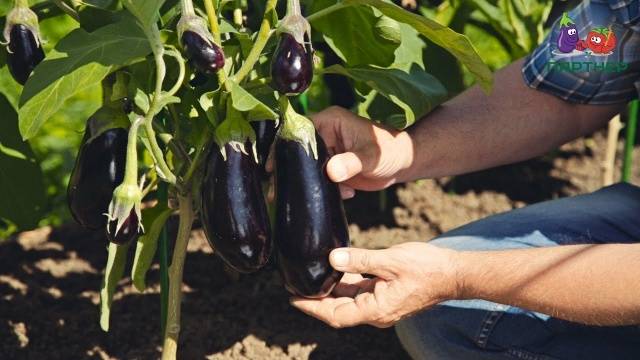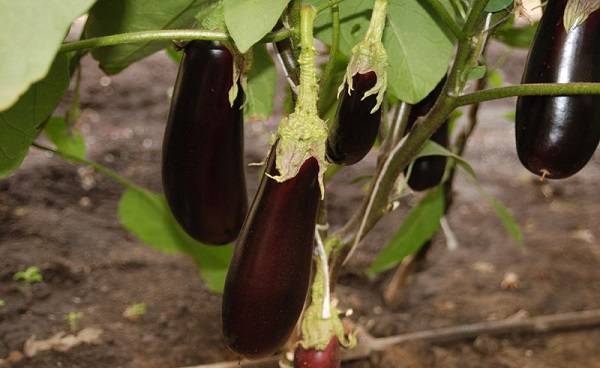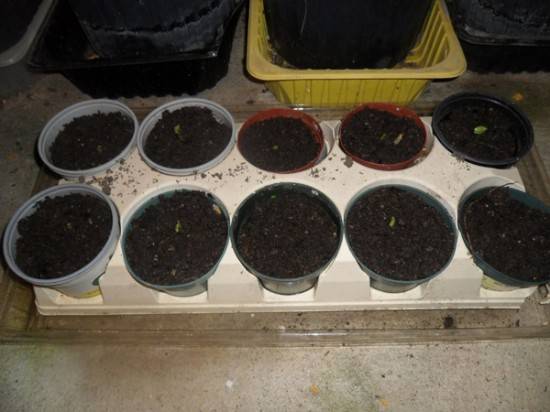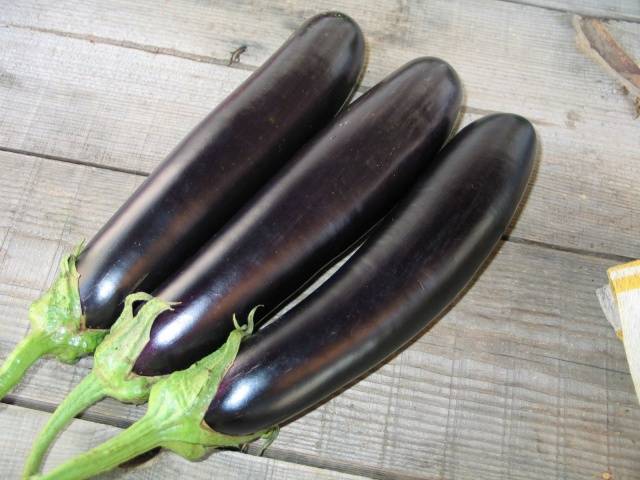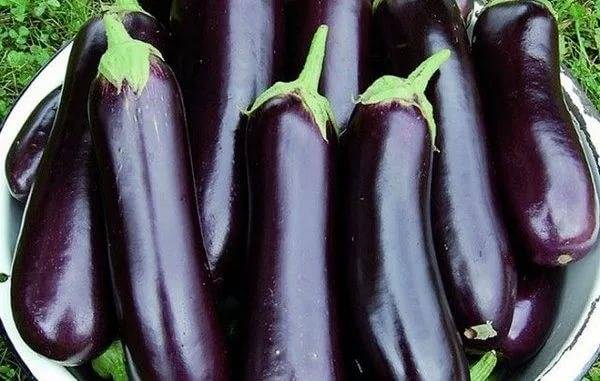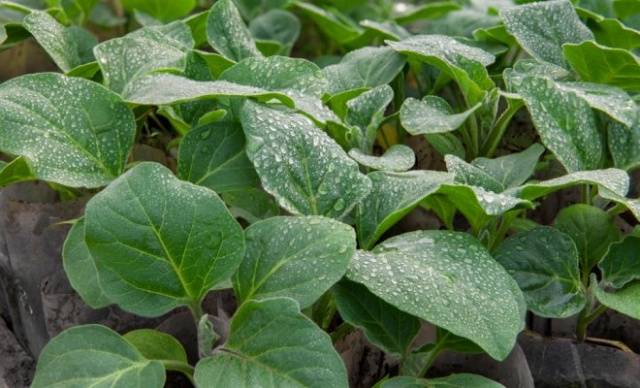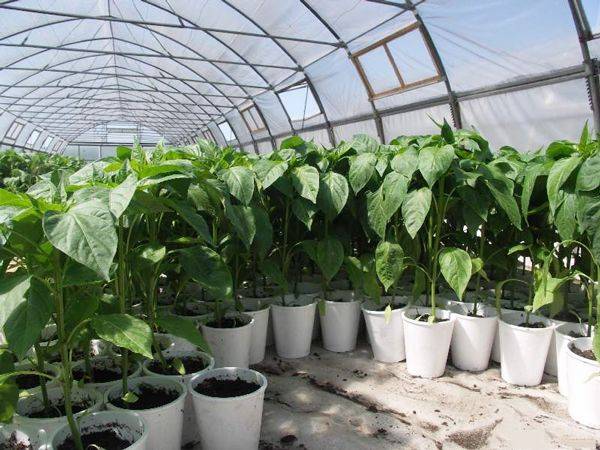Content
Eggplant has long been one of the useful and favorite vegetables and is successfully grown in different regions of our country - under a film or in the open field. Among the many varieties, Roma F1 eggplant is especially popular, the description of the variety of which testifies to its excellent taste.
The early ripe hybrid F1 quickly won the recognition of gardeners with its high yield, versatility, and high commercial characteristics.
Characteristics of the variety
The height of Roma eggplant reaches 2 m, it forms powerful bushes with large wrinkled leaves of bright green color. On them, elongated pear-shaped fruits of the traditional dark purple color are formed, characterized by:
- early ripening - they are 70-80 days after transplanting seedlings to open beds;
- light tender pulp and lack of bitterness;
- smooth, shiny surface;
- uniformity - the length of the fruits of the Roma F1 variety, on average, is 20-25 cm, and the weight is in the range of 220-250 g;
- high yield - from 1 sq. m you can get up to 5 kg of eggplant;
- a long period of fruiting - before the onset of frost;
- excellent keeping quality;
- disease resistance.
Growing seedlings
Eggplant Roma F1 loves open light areas with fertile soil, grows well on loam and sandy loam. The most convenient way is to grow through seedlings. Seeds are planted by the end of February or in the first decade of March.
Sowing seeds
The seeds of the hybrid variety Roma F1 do not require presoaking. They are planted in soil prepared from garden soil and humus, taken, in approximately equal parts, with the addition of a small amount of sand. If the seeds are pre-germinated, then the soil should be warmed up to +25 degrees before planting. Eggplant seeds are planted to a depth of 1.5 cm and covered with foil. It will speed up seed germination. The room should be kept at a temperature of 23-26 degrees.
After 15 days, after the first shoots appear, the film is removed, and the crops are transferred to a well-lit place. At this time, it is advisable to reduce the temperature in the room to + 17-18 degrees to ensure the development of the root system. After a week, you can again increase the daytime temperature to +25 degrees, and at night it can be kept at about +14. This contrasting temperature mimics natural conditions and helps harden the seedlings.
Dive eggplant seedlings Roma F1 after the appearance of cotyledonous leaves. Delicate sprouts are transferred carefully, with a lump of earth, trying not to damage the roots.
Preparing seedlings for transplanting
The description of the variety recommends that young Roma eggplant sprouts ensure regular watering, preventing the soil from drying out, since the eggplant painfully tolerates a lack of moisture. However, it is also impossible to overmoisten the soil. Roma eggplants should be watered with settled water, the temperature of which is not lower than that which is maintained in the room. Many gardeners use rainwater for irrigation. In order not to expose the roots of plants, it is better to use a spray bottle. After watering, you should carefully loosen the soil surface to avoid crusting. In addition, loosening reduces moisture evaporation.
In order for the Roma F1 eggplant seedlings to be strong and healthy, you need to provide them with good illumination.If daylight is not enough, additional lighting must be connected. Lack of lighting will lead to stretching of the sprouts, a decrease in their immunity; after transplantation, it will be difficult for them to adapt to new conditions. With proper care, two months after sowing the seeds, the Roma F1 eggplant seedlings will be ready to be transplanted into open soil.
Two weeks before transplanting, the seedlings begin to harden, taking them to fresh air and gradually increasing the holding time. After the end of night frosts around May - early June, Roma eggplants are transplanted under film shelters or on open beds. By this time, they should already have a strong root system and up to a dozen of these leaves.
Growing features
Eggplant varieties Roma F1 grow well after predecessors such as carrots, onions, melons or legumes. Among the features of their cultivation are the following:
- thermophilicity - the growth and pollination of eggplants is inhibited at temperatures below +20 degrees; "Blue" very poorly tolerate frosts, which must be taken into account when transplanting seedlings;
- plants should be provided with sufficient moisture, otherwise the ovaries will begin to fall off, and the fruits will deform;
- the yield of Roma eggplants is highly dependent on soil fertility.
Roma eggplant beds should be prepared in the fall:
- dig up the selected area to the depth of the shovel bayonet;
- clear the earth of weeds;
- at the same time add mineral fertilizers to the soil and mix well;
- in the spring, dig up the beds again, removing the remaining weeds and destroying the larvae of harmful insects in the soil.
Transplanting to the beds
The day before transplanting Roma F1 eggplants, water all seedlings well. If it is in the boxes, you need to water it just before excavation and planting in the ground. Eggplant seedlings are deepened into the ground by 8 centimeters, the root collar is also hidden in the soil by 1.5 cm.Plants need to be transplanted with a lump of earth, if it crumbles, you can prepare a chatterbox from clay with a mullein and lower the root part into it.
If the seedlings grow in peat pots, they just need to be placed in prepared holes filled with water. Around the pot, the soil should be compacted and mulched with peat. The optimal scheme for planting Roma F1 eggplants is 40x50 cm.
At first, the seedlings should be protected from night cold snaps. You can organize them with a film shelter using wire arcs. You can remove the film when constant heat is established - around mid-June. However, even at this time, nighttime cold snaps can occur; on these days, the bushes should be covered with foil at night.
Roma eggplants need some time to adapt to new conditions, so they will develop slowly during the first weeks. These days it is better to create partial shade for them, suspend watering and replace it by spraying the bushes with a weak aqueous solution of urea. You can provide air access to the roots by systematic loosening of the soil under the bushes.
Eggplant care
As evidenced by the characteristics and description of the variety, Roma F1 eggplant does not require complex maintenance. Agricultural technology consists of:
- in the regular loosening of the soil under the bushes after watering or rain, to avoid compaction;
- systematic watering with settled water heated in the sun, while avoiding waterlogging;
- timely fertilizing with mineral fertilizers and organic matter;
- careful hilling of bushes for the development of adventitious roots;
- periodic inspection of bushes and removal of weeds;
- preventive treatments for diseases and pests.
Some recommendations will increase the yield of bushes and speed up the ripening of fruits:
- after the formation of 8 fruits, remove the side shoots;
- pin the tops of the bushes;
- when flowering bushes, cut off small flowers;
- shake the bushes from time to time for better pollination;
- periodically remove yellowed leaves;
- watering in the evening.
Reviews of summer residents
Eggplant Roma F1 has earned the very best reviews from farmers and gardeners.
Conclusion
Eggplant hybrid Roma F1 will provide a high yield of tasty fruits, while observing simple rules of agricultural technology.
